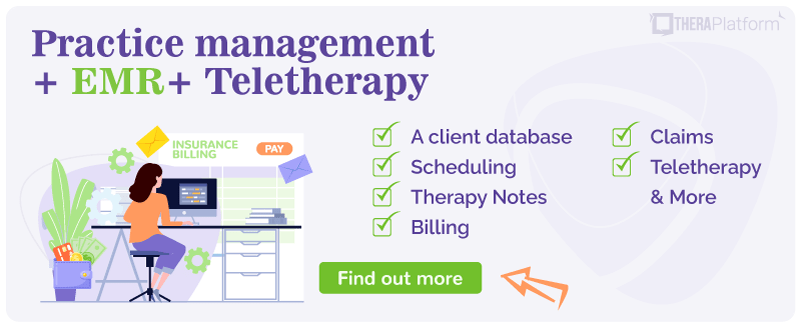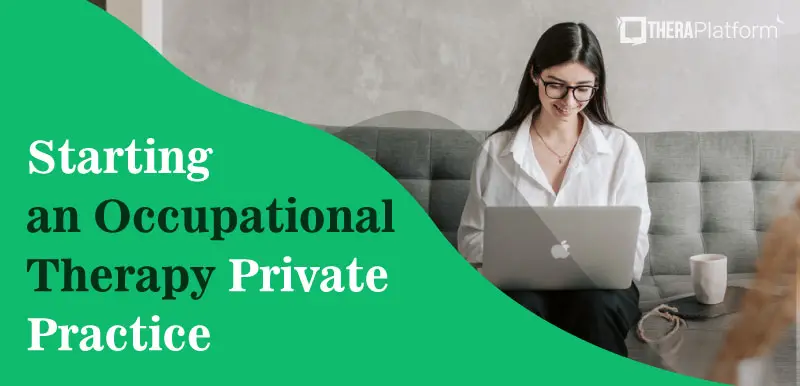Marketing For Therapists Starting a Private Practice
Building your private practice through client engagement

Building a private practice is all about client engagement, which is an important part of the therapeutic relationship. It’s how therapists develop and build connections with clients. The process begins with the very first interaction the client has with your practice and continues through discharge. Engagement happens within the therapy session through the therapeutic processes employed during the therapy session which may include techniques like games or apps. It also happens through the connections with clients and potential clients outside of the therapy space. This article will discuss what occurs outside of the therapy session.
How does engagement help with building a private practice?
Engagement begins as soon as the client visits your website or social media channels, views therapist directory listings, or calls the office.
While the ultimate goal of engagement is to help your clients find the most successful therapy outcome, you will begin building a private practice through these factors:
- Retention of current clients
- Conversion of potential clients into active clients
- Maintaining interest of clients on the waiting list
- Keeping clients motivated to work on their treatment plan and attend sessions
- Remaining connected with clients in between sessions
Building a private practice through engagement opportunities
Client engagement can occur across many different platforms for your practice. Some of the common places are:
- Website, blogs, newsletters
- Social media
- Emails
- EHRs
- Client resources such as worksheets, homework, YouTube channel, podcasts
Wherever the engagement occurs, it’s important to create consistent and clear messaging about your practice and how you can help people find relief from their pain points. You want to communicate a personalized tone that speaks directly to the pain points of your clients. Your message should communicate your role as an expert who can guide them, teach them, and help them find this relief.
Website
Your website should contain relevant content that clearly communicates your message. Visitors should have the experience of you speaking directly to them when looking at your website. A website that has your personalized tone, communication, and consistent messaging will help to keep visitors and clients engaged with you.
Some ideas for your website to increase client engagement to help with building a private practice include:
- Sharing your expert voice on relevant topics by providing a blog, resources, or worksheets.
- Empowering visitors to schedule directly online. Link the calendar to your practice management system so that you can easily track appointments and your availability.
- Keeping content easy to read and easy to scan.
- Using relevant and appropriate pictures and videos.
Social Media
Social media gives you the opportunity to connect and engage with clients and followers on a more personal level. Relevant social media posts can create and nurture conversation on your page, a key component to building a private practice. When you monitor the conversations on the page and respond to comments, you increase engagement with followers. It allows you to speak directly to the community following you on the social media platform.
Social media also gives you the space to speak to your community about new offerings, updates, or upcoming events with your practice. This way, you can increase the likelihood of your followers engaging with these specific situations and continue building a private practice.
Some examples include:
- New therapy services such as a new group, telehealth, or treatment mode
- Speaking engagements
- Workshops, classes, or retreats
- Opportunity to sign up for a newsletter
Emails
Emails should speak directly to the recipient in an individualized and personal way. When the recipients feel like you are directly speaking to them, they feel more connected and engaged to you which can help you in building a private practice.
Some important tips with email communications are:
- Begin the message by addressing the recipient by name
- Use a strong and relevant subject line
- Have a signature that includes your contact information, a link to your website, links to your social media platform(s), and your practice logo
Email Campaigns
An email campaign allows you the opportunity to send out mass emails to the subscribers to your list. Therapists might use an email campaign to communicate:
- Newsletters
- Updates to the practice
- Special offerings such as an ebook, workshop, or retreat
- Blog posts
Email campaigns are created by collecting email addresses and curating an email list. A number of email tools are available to help you in building a private practice email list. Another option is to offer website or social media channel visitors a “freebie” or lead magnet. People share their email address with you in exchange for a free offering such as a relevant worksheet, ebook, or other therapeutic tool.
The email campaign helps to engage your audience by connecting them to your consistent messaging. It gives you another way to share your voice as an expert and build a deeper relationship with the subscribers.
Watch the below video on how to save time in your private practice with TheraPlatform
EHRs
Appointment reminders
Most practice management systems, like Theraplatform, offer communication features like appointment and billing reminders. Approximately 20% of clients will miss their appointments and even stop counseling altogether. Missed appointments inconvenience the therapist and lead to decreased revenue, and severely impact the treatment outcomes for the client. Providing automated appointment reminders, for example, can increase the likelihood of clients attending their appointments and engaging in treatment.
Client portals
In addition to appointment reminders, a client portal is another area of client engagement and communication. Clients and clinicians can message, chat, share intake and consent forms as well as homework through client portals. Also, there’s the ability to schedule appointments and pay bills.
Client resources
Offering resources to clients and potential clients can foster and nurture a therapeutic relationship while waiting for a session with you. The time before, after, and in between sessions can be very difficult for clients. They may feel overwhelmed, lost, and struggle immensely. Those people on the waiting list may feel like they will never get help. Many people may visit your website or social media while feeling unsure about beginning therapy.
Through appropriate resources, you can offer your unique voice, support, and expertise during this potentially stressful time outside of the therapy session. Knowing that they can access your resources can be very comforting and improve the quality of treatment outcomes and engagement with you.
You can offer links to resources on your website, social media platforms, or even your practice management system.
Helpful resources may include:
- Worksheets
- Ebooks
- Videos through a YouTube Channel
- Podcasts
- Blogs
- Guided meditations
The final part of engaging your clients is to make your communications easily accessible. Having clear links and messaging on your website, social media platforms, and email signatures make it easier and more likely for your clients to engage with you.
As you employ strategies for increasing your client engagement and building a private practice, your clients will experience a stronger and deeper therapeutic relationship which will result in more successful treatment outcomes.
Building your private practice through client engagement can be accomplished in many ways. EHRs like TheraPlatform offer an intuitive, HIPAA-compliant video conferencing platform along with a client portal that can make building your private practice therapy business a breeze. TheraPlatform, an all-in-one EHR, practice management and teletherapy tool was built for therapists to help them save time on admin tasks. And they’re offering a risk-free, 30-day trial. No credit card required. Cancel anytime.
Sources
Chowdhury, M. “What is Client Engagement in Therapy and How to Apply It?” PositivePsychology.com, October 22, 2019. Accessed July29, 2022.
DeFife, J. “Psychotherapy appointment no-shows: Rates and reasons.” Psychotherapy Theory Research Practice Training, September 2010. Accessed July 29, 2022.




